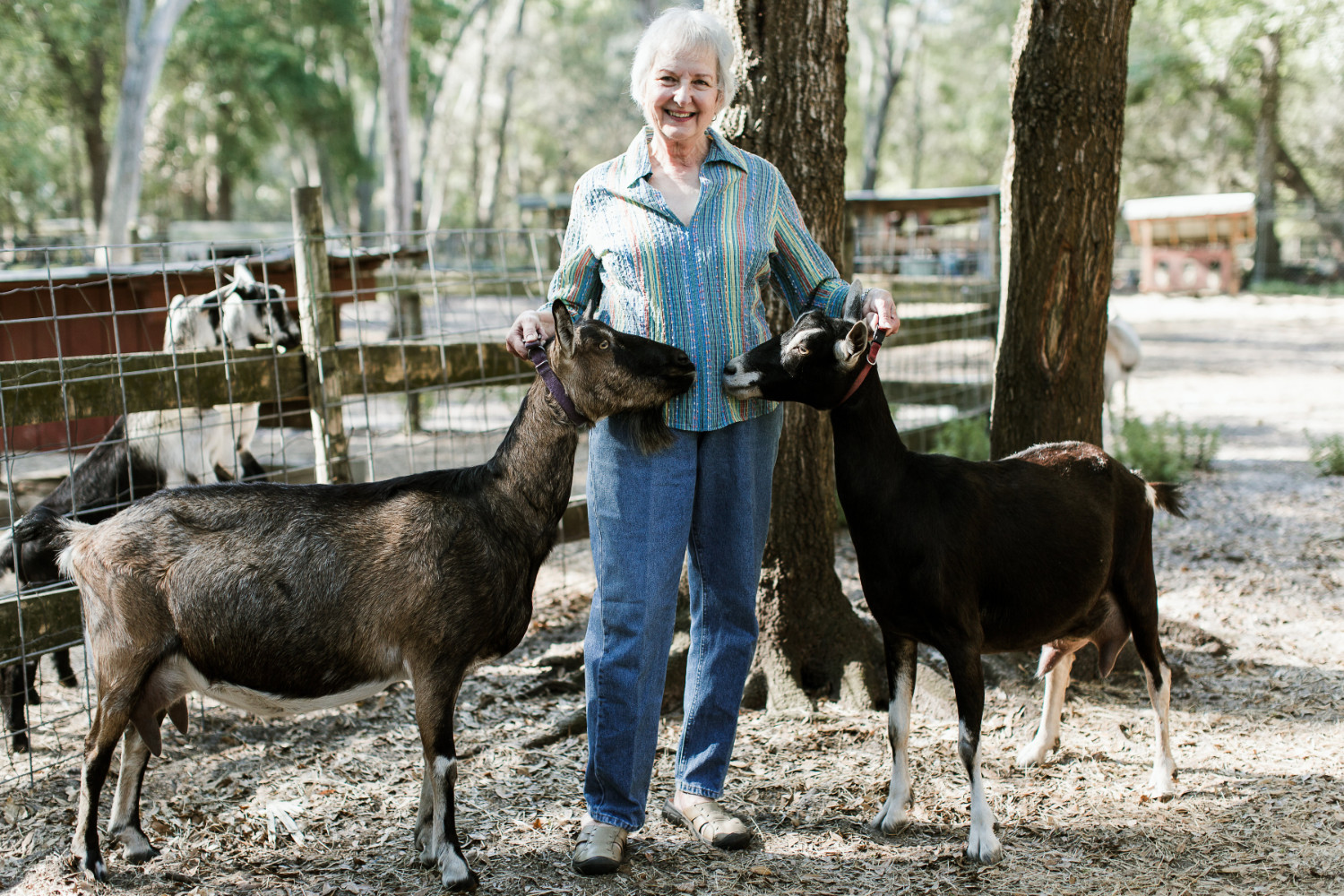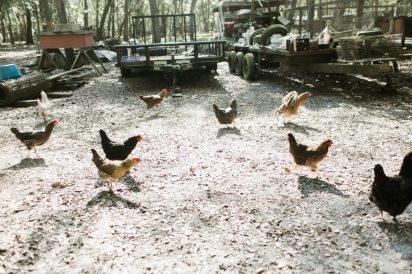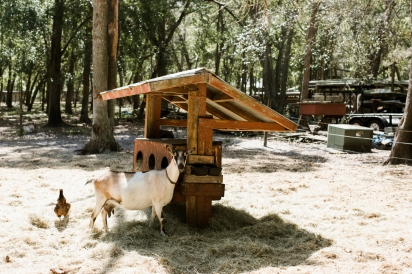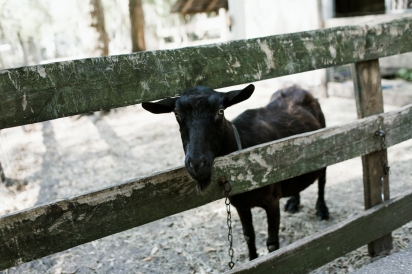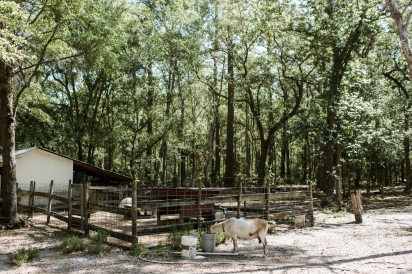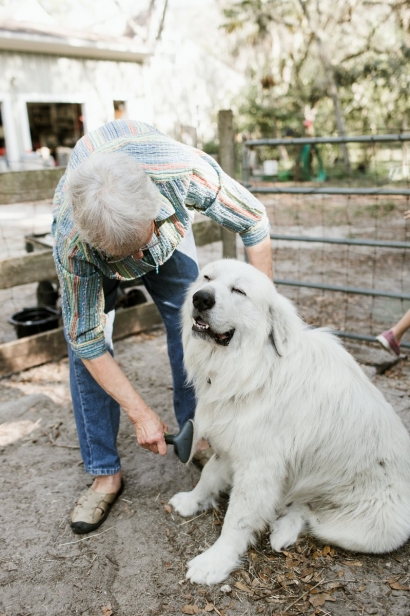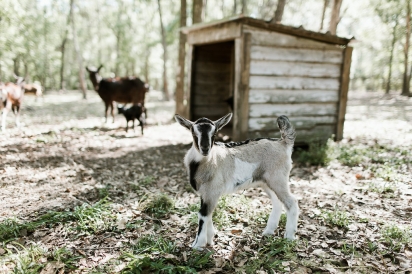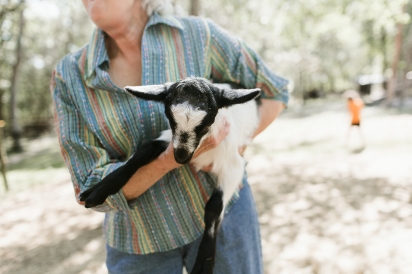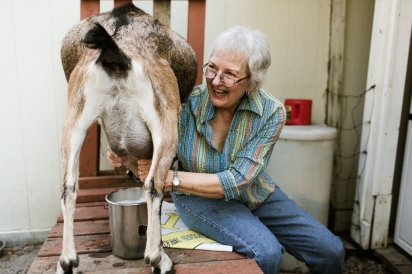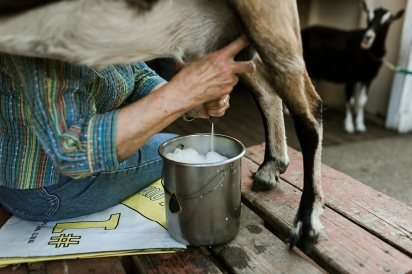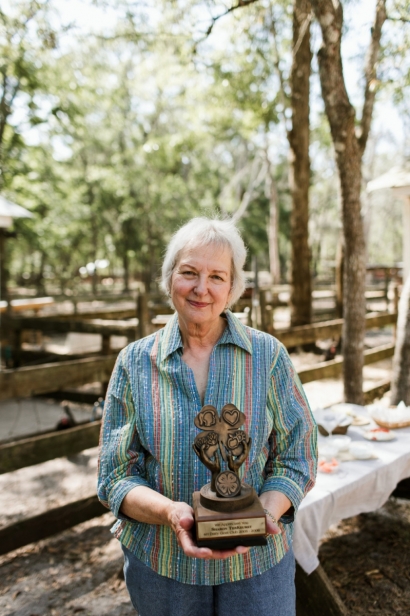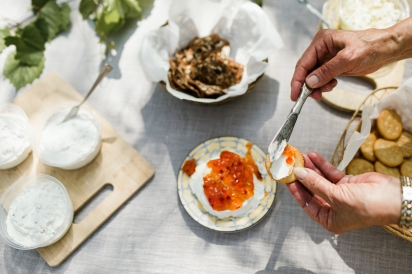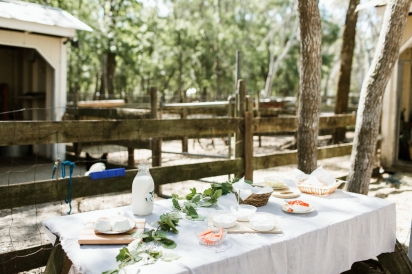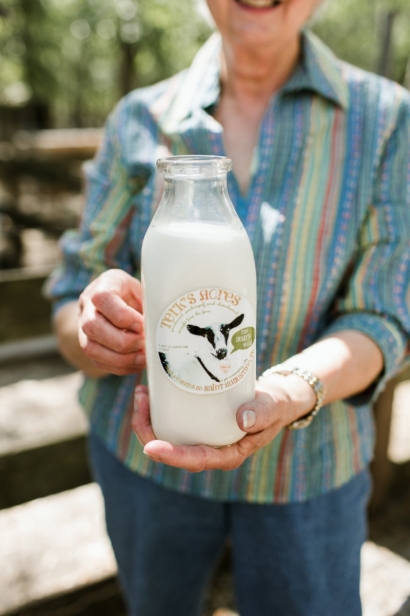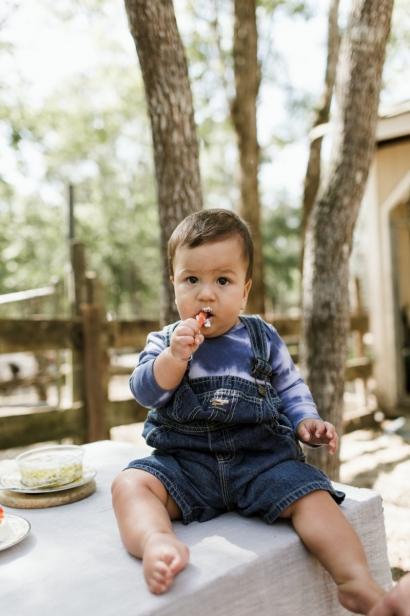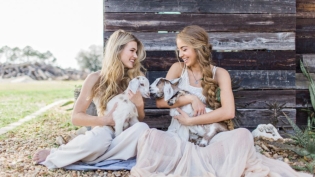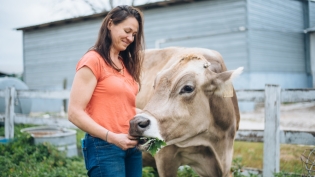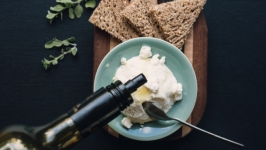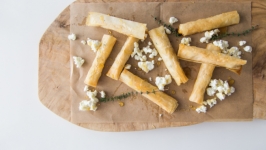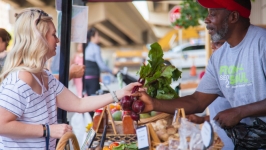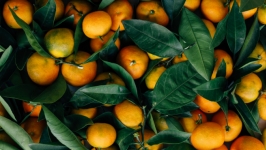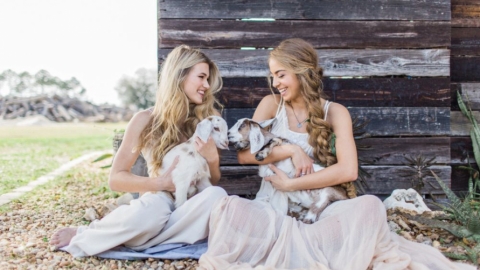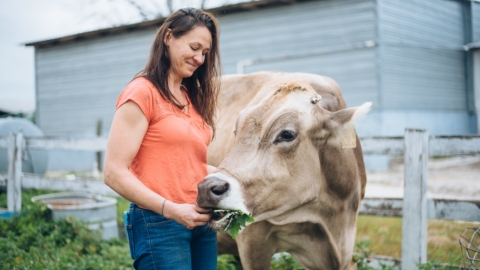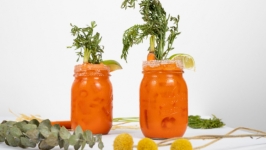The Accidental Goat Farmer
Our family’s introduction to goats was because of a “gifted” goat. My husband had been raised on a farm and wanted that experience for his family. Each time we found property, however, his career necessitated a move, and the dream was put on the back burner. When we moved from New Jersey to Florida my husband declared “it had to be [now, or] the boys would be grown without a taste of farm life.”
He found five acres close enough to commute to his office in Ft. Lauderdale, and our homestead, named the “Polish Ponderosa,” came complete with stalls, fencing and a covered recreation area.
Word got out to his office workers and we were gifted with a Bluetick Coonhound (Bill), a German shepherd (Smokie) and a dairy goat (Misty), which joined chickens, rabbits and other animals left behind by the previous owner. Not being a farm girl I asked that no animals larger than me be accepted: no horses, no cows, no hogs! My husband traveled for work and I did not relish taking responsibility for animals I would not be comfortable with (even though my sons wanted horses for the stalls).
The Bluetick Coonhound was taken to obedience training by our son and Misty became our ticket to joining a dairy goat club in South Florida. We signed up for the South Florida fair, for the dog obedience contest as well as the dairy goat show. We learned how to clip a goat and while Misty was commended for her shiny coat, she did not place due to her pendulous udder. Coonhound Bill lumbered through his commands. We praised them both.
More goats were purchased and more competitions were enjoyed. We learned how to choose a good producer. She had to be alert and lively, easily moving around on strong legs and feet. Plus, she had to have a well-shaped udder and teats capable of holding a large quantity of milk and easily milked.
My education as a goat farmer came as on-the-job training. I learned the female goat is correctly called a doe, the male is the buck and the young are kids, and there are seven recognized breeds of dairy goats. As with all animals, there are variations within and across breeds. Production, length of lactation and amount of butterfat differs from goat to goat as well as breed to breed.
One more move brought us to St. Augustine. Before leaving South Florida, while selling some of our goats, I noticed someone was selling a registered Alpine doe raised with a horse companion. She came with us, along with Misty, who was a Nubian known for long basset hound–looking ears and Roman nose. They are good producers with higher butterfat in their milk, giving it a richer taste. Alpines are the oldest breed in Europe, very intelligent and not as vocal as Nubians. They are very hardy, good milk producers and come in all colors.
Other dairy goat breeds include:
Saanens come from Switzerland. They are white or light cream in color, known for high milk production and low butterfat. Because of their fair skin, they are susceptible to sunburn.
LaManchas are easily recognized by their tiny external ears. They come in all colors and are known to be docile, hardy milkers with long lactations.
Toggenburgs have coats of solid color varying from light fawn to dark chocolate. They have distinctive white markings on their faces and legs. These goats have high productivity, with some having “off-tasting” milk.
Oberhaslis are the latest large dairy goat breed to be recognized in the U.S. This goat has a strikingly beautiful red coat. Breeders have improved their udder conformation and productivity with careful breeding.
Nigerian dwarf is a smaller breed, and so cute! Because of its size, this variety doesn’t produce as much milk as others. It has a very easy temperament and is often preferred by families with young children.
To share my knowledge with young people who did not have an opportunity to keep goats and enjoy their friendly, lovable, curious and intelligent ways, I became a 4-H dairy goat club leader. Goats are ideal for children because they are not intimidating. Participants in 4-H became knowledgeable about dairy goats by preparing for the fairs and showing their assigned/chosen goats.
My 29 years as a leader were very rewarding. The young members usually came from town and had no experience with goats. The 4-H year coincided with the school year so when members arrived in the fall they learned all about goats: what they eat, their housing requirements, daily care, body parts and how to choose a healthy, productive goat. They also learned how to milk and handle the milk in a very clean environment. One highlight in my years as a leader was being honored as one of the three best 4-H leaders in the state in 2006.
Along with learning about the goats, 4-H members were required to keep records and present their knowledge through public speaking. Each dairy goat club member completed a record book and participated in the public speaking competition by giving a demonstration on some subject about goats that interested them. It was wonderful to see the progress the members made through the years. Many members stayed for five years or longer and made great strides in their confidence and writing their stories about the year in their record books.
Springtime meant show time, and club members would put their chosen goats through their paces to lead well, show off their best traits and win in the show ring. There is a detailed process to show a goat, and both the goat and the handler have to learn this. A few times goats escaped the show ring, and occasionally 4-H members needed strong muscles to hold the more opinionated does!
One year when we were short a few does, a past member who kept goats let us borrow two for the year. I didn’t know that they wouldn’t be missed after the 4-H year was over and that they would not be retrieved by their owner! One danced on the milk stand and the other jumped fences. The dancer learned the ropes, but the jumper never learned not to jump—but she stayed on the farm, where she knew she would be fed.
Through the years the number of goats in the herd has fluctuated. We always said the limit was 20 goats, but it’s hard to give up some when you get too many favorites. We are aiming this year to keep that limit, including our two retirees, Dixie and Beulah. They will live out their years here on our farm, Terk’s Acres.
I have enjoyed my herd of Alpines while learning to use the milk in many ways: milk, yogurt, kefir, mild feta, chevre, several cheese spreads with various spices and tastes as well as a cheese for slicing, tuma. The benefits of goat’s milk and products are becoming more widely known and folks enjoy finding local sources. It’s been fun becoming friends with regular customers over the years.
Other than hearing tales from friends or family who had a young child allergic to cow milk and needed goat milk to survive, goat milk was not commonly consumed. Tales always included an adventure of finding a farmer who had a goat in milk or actually purchasing a goat for the duration. Although worldwide more people consume goat milk rather than cow milk, that has not been the case in the United States. Today, with more people interested in foods that are high in health benefits, goat milk is becoming popular.
I learned firsthand the benefits of consuming goat milk products while caring for my mother. After my father’s death my mom came to live with us. She had severe osteoporosis, causing her much pain. After reading that goat milk was easier to digest than cow’s milk for some people and that it contained more calcium than cow’s milk, we decided to give it a try with mom. Our first goat Misty came to the rescue. She was bred, had a baby and had delicious milk. Mom was agreeable to drinking three small glasses of Misty’s milk daily.
After we moved to St. Augustine, mom went to a new rheumatologist. Testing showed a vast improvement in her bone density and she had a lot less pain, reason enough for her to continue drinking goat milk. Mom lived with us seven years until her death at the age of 91, never complaining again of severe back pain.
If you are interested in purchasing dairy goats, start small and learn as you go. Often referred to as the Goat Lady, I gladly give advice about dairy goats to interested folks.
You can find Terk's Acres on Saturdays at the Old City Farmers' Market in St. Augustine.


